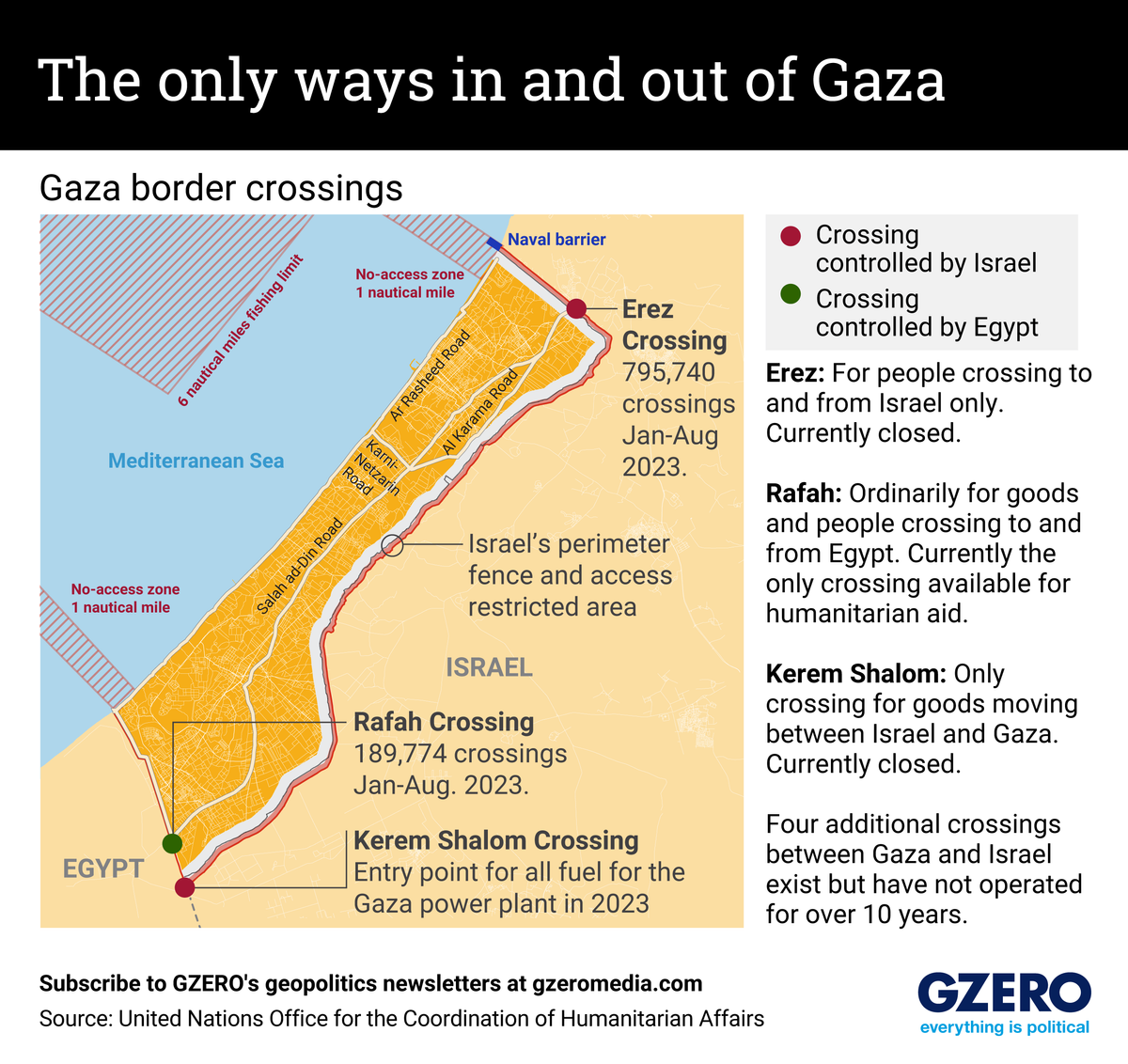When you hear reports that people in the Gaza Strip are trapped, you may not realize just how literally to take it.
The fact is that even before Hamas’ terrorist attacks on Oct. 7, people in Gaza had only one path into Israel, the Erez Crossing. Prior to the war, about 18,500 Palestinians there held work permits in Israel, a lucrative opportunity considering about half of Gazans are unemployed and the rest earn an average of $13 a day. Many of those workers, having traveled across the border on Oct. 7 to work, now find themselves stuck in Israel, without legal status, their futures uncertain.
The Kerem Shalom crossing – practically on the tripoint of the Israel-Egypt-Gaza border – is usually how Gaza exchanges goods with Israel. All the fuel for Gaza’s lone power plant entered through Kerem Shalom, which Israel has now cut off. The only way into Egypt, the Rafah Crossing, has become the sole lifeline supplying food, water, and medicine for 2.3 million people. When Israel built the complex barrier surrounding Gaza, it included four additional crossings, which it closed one by one between 2005 and 2011.
Fleeing by sea or air is impossible. Israeli warships ensure Gazans with boats stick to the small area designated for fishing, and there are no modern port facilities in the enclave. Gaza briefly had its own international airport, near Kerem Shalom, but Israel bombed it in 2001 and bulldozed the runway in 2002 during the second intifada.
So when you hear broadcasters say Rafah is the only way into or out of Gaza, that’s not an exaggeration — nor are they exaggerating the tremendous deadly toll civilians will suffer if Israel launches a ground invasion.






